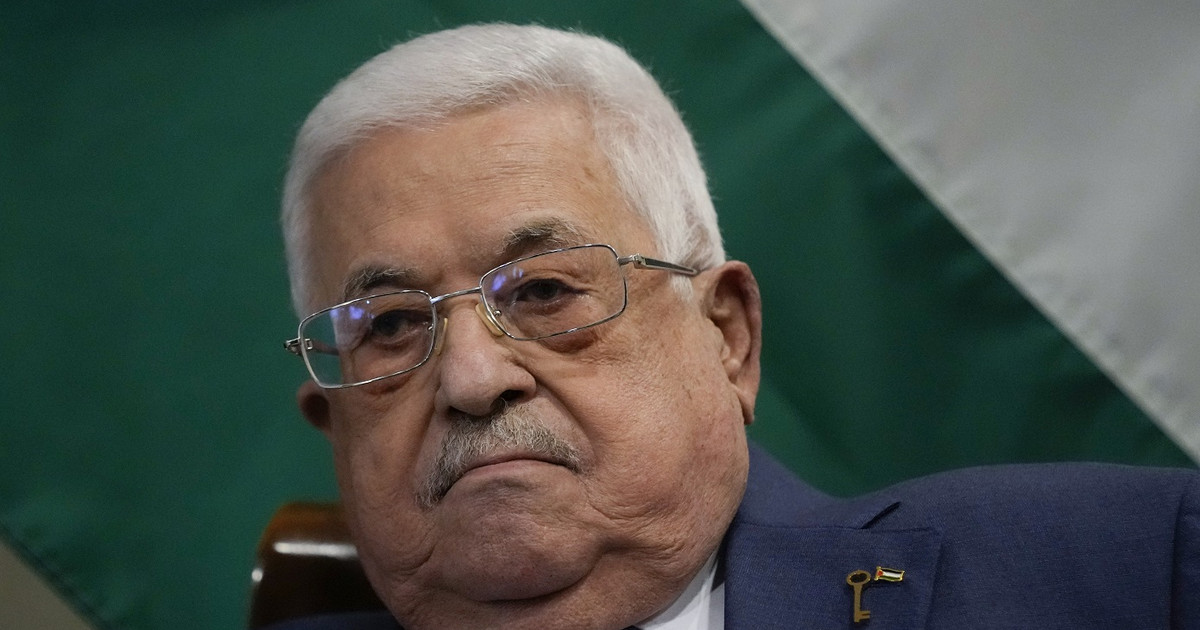Nearly 200 countries adopted the Glasgow, Scotland, climate agreement on Saturday (13), in negotiations that took place during the COP26, after nearly two weeks of disputes about everything, as to how much to limit the global warming, what to say about fossil fuels and whether the countries most affected by the climate crisis should be compensated.
Some consider the deal a success, others a failure, and many say it’s in between. Check out the main elements of the new climate pact.
First mention of fossil fuels… with many caveats
The agreement makes an unprecedented mention of the role of fossil fuels in the climate crisis. This is something that not even the history Paris agreement was able to achieve.
The Glasgow agreement calls for phasing out the use of coal and inefficient fossil fuel subsidies.
The language was originally stronger, but has been diluted several times. It looked like the stretch could even be discarded near the end, when the India, with the support of the Will, made it clear that he would not give his approval on it. The pact requires all 197 parties to agree on the final text.
But at the last minute, India said it would accept the language with an adjustment — that coal should be “reduced”, not “eliminated”, in what some observers see as a take-back clause that would allow continued use of coal.
COP26 Chair Alok Sharma was seen gathering opinions in the plenary to see if others would support the move to essentially save the article.
When asked her opinion of the entire deal, even Greenpeace International Executive Director Jennifer Morgan saw the inclusion of coal as a victory for the climate.
“It’s tame, it’s weak, and the 1.5°C target is barely alive, but a signal has been sent out that the coal age is ending. And that matters,” she said. Sharma faced doubts about the way he handled the last-minute change, for which he later apologized.
“This will not bring us any closer to the 1.5ºC target, but it will make it more difficult to reach it,” said Swiss Environment Minister Simonetta Sommarug, receiving a long round of applause.
But India’s Environment Minister Bhupender Yadav, who opposed the text, said it would be difficult for his country to end coal use and fossil fuel subsidies as it tries to fight poverty.
“How can anyone expect developing countries to make promises about phasing out coal and fossil fuel subsidies?” he asked.
“Subsidies provide much-needed social security and support,” he said, setting an example of how India uses subsidies to provide liquefied natural gas to low-income families.
2022, a year for the world to pull itself together
Perhaps the most important change has been the language that prompts parties to attend COP27 next year at Egypt with updated plans on how to reduce greenhouse gas emissions by 2030. Under the Paris Agreement, countries were only required to update their targets until 2025.
The idea is for countries to increase their ambition more regularly, which should mean an acceleration to zero net emission – a state in which the amount of greenhouse gases emitted is no greater than the amount removed from the atmosphere.
The latest scientific report on the climate, published by HIM-HER-IT in August, it called for emissions to halve by 2030 and for the world to reach net zero emissions by mid-century to have any hope of keeping global warming at 1.5ºC.
The question now is: will countries really do this?
“By agreeing to this emergency package, they responded to mounting climate damage with an action plan to keep the 1.5°C target within reach,” said Nick Mabey, co-founder and executive director of climate think group E3G.
“But the real task begins now, as each country must go home and fulfill its promises in Glasgow.”
Rich countries agreed more than 10 years ago to transfer $100 billion a year to developing nations to help them transform to low-carbon economies and adapt to the climate crisis.
Adaptation can involve many things, from building breakwaters to prevent flooding to removing communities from the coast and renovating homes to better withstand extreme weather events.
Not only has the rich world failed to deliver the $100 billion by the 2020 deadline, but developing nations say it’s not nearly enough. They had been calling for a 50-50 split between mitigation – measures to reduce emissions – and adaptation that would help them deal with the consequences of climate change. Much more money flowed into measures focused on cutting emissions.
The Glasgow deal includes a doubling of money for adaptation by 2025 from 2019 levels, which is progress in this area. But the $100 billion target is still out of the way, and will likely not be met until 2023, as a report by the COP26 presidency found. There are also questions about whether developed nations will maintain this level of funding annually.
“It is inexcusable that developed countries fail to deliver on their commitment to deliver $100 billion annually starting in 2020, even as they provide hundreds of billions of dollars in subsidies for fossil fuels,” said Ani Dasgupta, President and CEO of World Resources Institute.
“It is significant that the final outcome of COP26 puts developed countries under an obligation to report on their progress towards the $100 billion target. Countries have also made progress on developing a new financial target that goes beyond 2025. Nations have also agreed to at least double the financing for adaptation by 2025, implying at least US$40 billion, which is very important progress.” , he stated.
No “liability” fund to pay for the destruction of the climate crisis
This is a point at which many developing and climate-vulnerable countries will return home disappointed. There were high hopes that a fund would be created to pay for the damage and destruction that the climate crisis brings to the worst-affected countries.
The idea was that rich nations would pay for it, and if a country experienced an event like floods that destroy homes, that money could help it rebuild. This is called “loss and damage” in climate parlance.
The agreement recognizes the importance of damages and damages and agrees to increase technical assistance to affected countries. But instead of agreeing to a dedicated fund for this, it requires more dialogue, which means that a real fund can take years if that happens.
Or sent climate two USA, John Kerry, confirmed after the decision that his country was against this fund for the time being, while the European Union I had previously said that I would not support him.
Rachel Cleetus, policy director and chief economist for the Union of Concerned Scientists’ Climate and Energy Program, said the Australia it was also blocking progress. THE CNN contacted the delegation.
“The Glasgow Loss and Damage Facility’s proposal to channel new and additional funds for damages did not materialize after being blocked by wealthier nations including the United States, Australia and the European Union,” said Cleetus.
“The final decision of COP26 is overwhelmingly compromised by the countries that contributed the most to the climate crisis and once again deny justice for developing countries vulnerable to the climate”.
It took six years, but a rulebook for the Paris Agreement was finally completed. Or almost
If there’s any sign of how slow progress toward consensus may be, it’s that it wasn’t until Saturday that the world agreed to the pending rules of the Paris Agreement, signed in 2015.
There was a concern with the creation of carbon emission markets, known as “Article 6”, which is so technical that the world has not been able to reach a consensus on its wording and content for the past five years.
A loophole that could have allowed some countries to count double their carbon credits also raised concerns. And that would be disastrous, as the world would soon lose track of how much greenhouse gas is actually being removed or offset and sold in the markets.
One way to offset greenhouse gases is to pay countries with significant forest cover not to cut down their trees or to plant more of them. Trees can absorb and lock large amounts of carbon. Cutting or burning them releases carbon dioxide into the air. One country may also pay another to build a wind farm, for example, instead of a coal or oil plant.
Brazil was pressing to reach this agreement, as it could become a major exporter of carbon credits through the Amazon, but also through carbon credit projects. renewable energy, such as wind and solar.
It’s good news that the rules have been decided and some loopholes closed, but some experts caution against allowing too much offsets, saying this is just an incentive for nations and companies to continue to issue as normal, especially rich nations and big companies that can pay a lot for compensations.
There are also fears about the implications of the system for indigenous people, who are concerned about the commodification of their lands. According to the UN, indigenous peoples represent less than 5% of the world’s population, but protect 80% of the remaining forest biodiversity around the world.
And although it has been adopted, there are still technically some details that have not been agreed upon.
“We are extremely pleased that the COP26 participating countries have agreed on how global carbon trading will work to accelerate climate action. The progress made in Glasgow is a crucial step in keeping the global average temperature rise below 1.5°C,” said James Roth, senior vice president, global policy and government affairs, Conservation International.
“After six years of negotiations, the rules that allow countries to trade carbon credits with each other, known as Article 6.2, were agreed, with the exception of some operational elements,” said Roth.
“This level of certainty will drive new investments to scale the climate actions we desperately need across all sectors, including halting deforestation and promoting other natural climate solutions.”
Some good news, some bad news. As UN Secretary General Antonio Guterres said, work is starting now for COP27 in Egypt. Only then will Glasgow’s true impact become clear.
*(Translated text. Click here to read the original, in English)
Reference: CNN Brasil
I’m James Harper, a highly experienced and accomplished news writer for World Stock Market. I have been writing in the Politics section of the website for over five years, providing readers with up-to-date and insightful information about current events in politics. My work is widely read and respected by many industry professionals as well as laymen.






